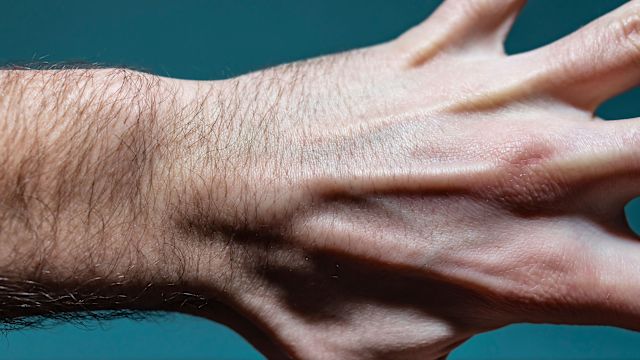The word “tumor” refers to any abnormal mass of cells in the body. While the word tumor is often associated with cancer—and many cancers form tumors—there are hundreds of varieties of tumors that are benign, including numerous varieties of tumors that form in the hands. Below, we will look at three common types of benign hand tumors—ganglion cysts, tenosynovial giant cell tumors, and epidermal inclusion cysts.
Before we get started, and important note—if you have an abnormal lump or bump in your hands, or any other place in your body, it is important to see a healthcare provider to have it evaluated. The only way to know for sure what is causing an abnormal lump or bump is to get an accurate diagnosis. While most tumors that affect the hands are benign, there are malignant varieties as well. And both benign and malignant tumors can cause damage to your hands and your health.
Ganglion cysts
Ganglion cysts are lumps or bulges that form on the tissues that cover the tendons and joints (called the tendon sheath and joint capsule, respectively). They are filled with a thick fluid similar to the fluid that lubricates the joints, and are sometimes described as looking like “water balloons on stalks.” They can vary in size—some ganglion cysts can be the size of a pea, while others can be more than an inch in diameter.
The wrist is the most common location, but ganglion cysts can also form on the fingers, as well as the ankles and feet. They can cause joint instability, weakness, and limited movement. They can also cause pain, tingling and numbness if they are pressing on a nerve.
Ganglion cysts are more common in women (especially between the ages of 20 and 40), and are more common in people who have osteoarthritis of the finger joints. They are also associated with injury or trauma to the joints, such as the repeated stress of activities like gymnastics. However, healthcare providers are not entirely sure why ganglion cysts form in some people and not in others.
Treatment will depend on the size, location, and symptoms. Ganglion cysts that are not causing pain or other symptoms may not require immediate treatment, because cysts often resolve on their own.
If treatment is required, it may involve management with splints to immobilize the affected joint and anti-inflammatory drugs to relieve pain. In other cases, a healthcare provider may drain the contents of the cyst with a non-surgical procedure called aspiration. In some cases, ganglion cysts are removed surgically.
Tenosynovial giant cell tumors (TGCTs)
TGCTs are a rare type of benign tumor that form on the tendon sheath. Some types result in nodules or small growths in one part of a joint (called a localized pattern), while others affect the whole joint (called a diffuse pattern). TGCTs can affect any joint in the body, but some joints are more commonly affected than others—localized types most commonly occur in the joints of the hands and feet, while diffuse types are most commonly occur in the knee. TGCTs can affect people of any age, but are most common in people between the ages of 25 and 40.
Unlike cysts, TGCTs are typically solid masses of cells. They grow larger over time, though slowly, and they do not spread to other parts of the body or invade surrounding tissue the way a malignant cancer would. TGCTs can cause a variety of joint symptoms—the joint may feel like it is locking or catching, and there may be pain or swelling. Over time and left untreated, TGCTs can cause joint damage and disability.
Surgery to remove TGCTs is the standard therapy, though radiation therapy has also been used, and several disease-modifying therapies (DMTs) are being studied for treating TGCTs.
Epidermal inclusion cysts
Epidermal inclusion cysts are known by a number of different names—epidermal cysts, epidermoid cysts, inclusion cysts, keratin cysts, infundibular cysts. These are very common in adults, and often (but not always) form after injury to the skin, such as a puncture or a cut. Epidermal inclusion cysts are made up of dead skin cells and a waxy protein called keratin that is produced by skin cells.
Epidermal inclusion cysts are often painless, slow growing, and do not cause symptoms. In most cases, they will not require treatment. But they can cause complications if they are inflamed, become infected, or rupture. Treatment may involve injecting the cyst with medicine, draining it with an incision, or minor surgery to remove the cyst.
Medically reviewed in January 2020.





